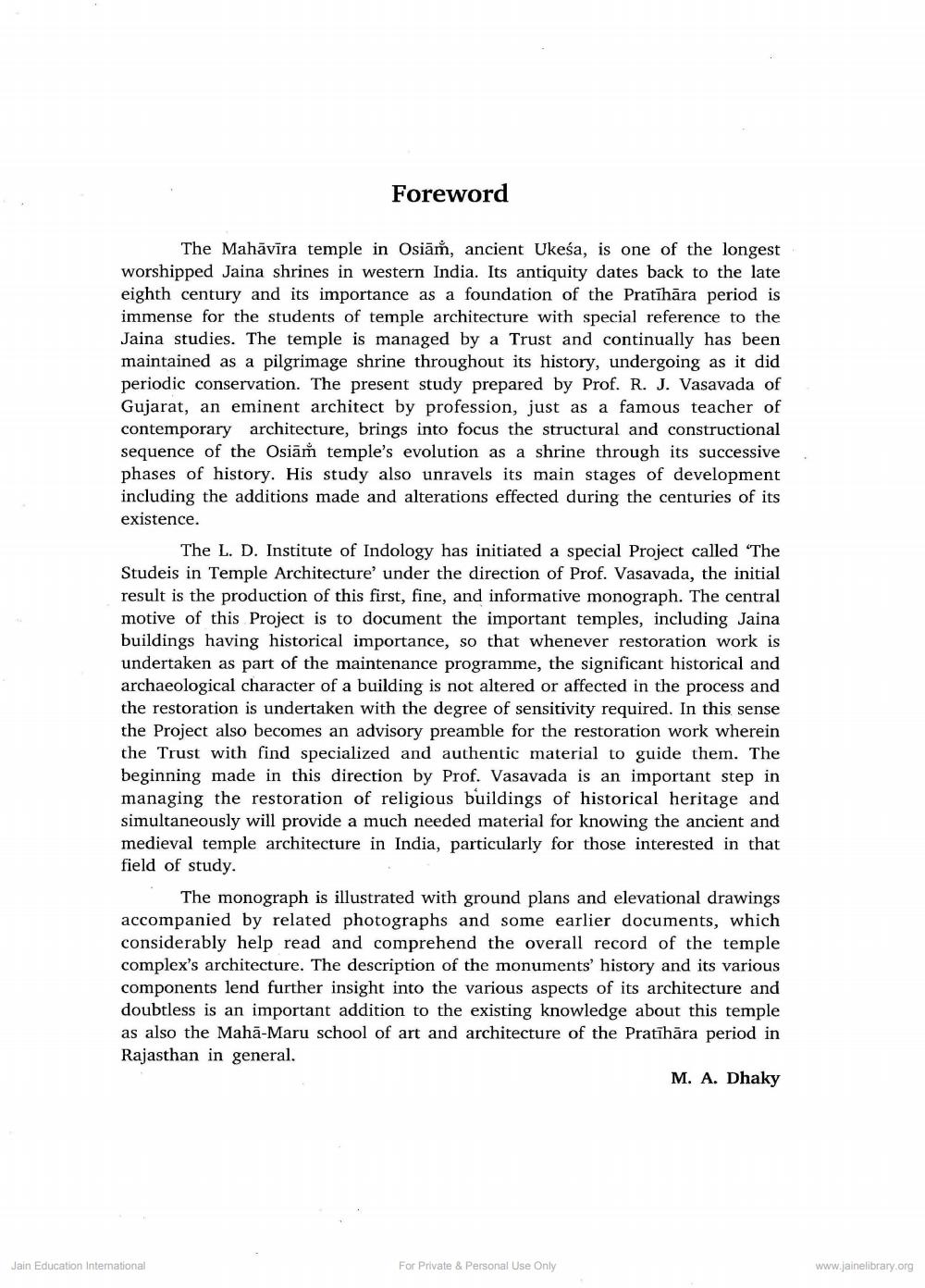Book Title: Osiaji Mahavira Temple Author(s): Rabindra J Vasavada Publisher: L D Indology Ahmedabad View full book textPage 7
________________ Foreword The Mahāvīra temple in Osiāṁ, ancient Ukeśa, is one of the longest worshipped Jaina shrines in western India. Its antiquity dates back to the late eighth century and its importance as a foundation of the Pratīhāra period is immense for the students of temple architecture with special reference to the Jaina studies. The temple is managed by a Trust and continually has been maintained as a pilgrimage shrine throughout its history, undergoing as it did periodic conservation. The present study prepared by Prof. R. J. Vasavada of Gujarat, an eminent architect by profession, just as a famous teacher of contemporary architecture, brings into focus the structural and constructional sequence of the Osiāṁ temple's evolution as a shrine through its successive phases of history. His study also unravels its main stages of development including the additions made and alterations effected during the centuries of its existence. The L. D. Institute of Indology has initiated a special Project called 'The Studeis in Temple Architecture under the direction of Prof. Vasavada, the initial result is the production of this first, fine, and informative monograph. The central motive of this project is to document the important temples, including Jaina buildings having historical importance, so that whenever restoration work is undertaken as part of the maintenance programme, the significant historical and archaeological character of a building is not altered or affected in the process and the restoration is undertaken with the degree of sensitivity required. In this sense the Project also becomes an advisory preamble for the restoration work wherein the Trust with find specialized and authentic material to guide them. The beginning made in this direction by Prof. Vasavada is an important step in managing the restoration of religious buildings of historical heritage and simultaneously will provide a much needed material for knowing the ancient and medieval temple architecture in India, particularly for those interested in that field of study. The monograph is illustrated with ground plans and elevational drawings accompanied by related photographs and some earlier documents, which considerably help read and comprehend the overall record of the temple complex's architecture. The description of the monuments history and its various components lend further insight into the various aspects of its architecture and doubtless is an important addition to the existing knowledge about this temple as also the Mahā-Maru school of art and architecture of the Pratīhāra period in Rajasthan in general. M. A. Dhaky Jain Education International For Private & Personal Use Only www.jainelibrary.orgPage Navigation
1 ... 5 6 7 8 9 10 11 12 13 14 15 16 17 18 19 20 21 22 23 24 25 26 27 28 29 30 31 32 33 34 35 36 37 38 39 40 41 42 43 44 45 46 47 48 49 50 51 52 53 54 55 56 57 58 59 60 61 62
